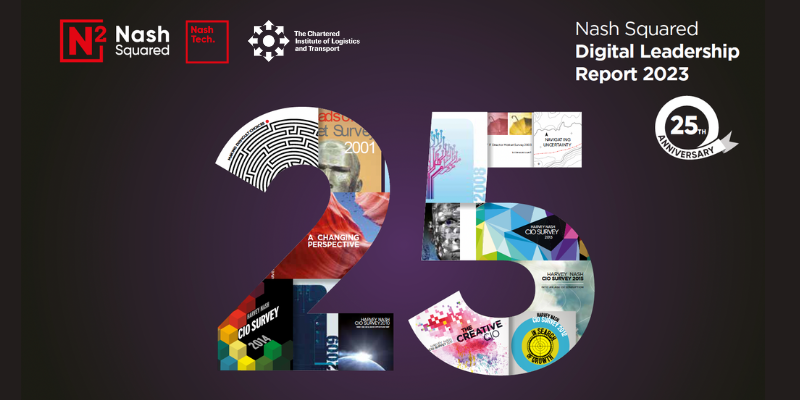Home / Our thinking / Insights / The role of machine learning, data and artificial intelligence in logistics
The role of machine learning, data and artificial intelligence in logistics

Table of contents
Short on time? Here are the key takeaways:
- The value creation of AI in logistics is immense; transforming operations in the warehouse and supply chain, increasing productivity gains and improving efficiency of business processes
- Changing regulations, data privacy, AI governance and managing bias and hallucinations remain a top concern for organisations
- The generative AI paradox: should organisations invest in AI today, or are the risks too high? Is the AI hype cycle leading organisations down the wrong path?
- While there are benefits to implementing generative AI into their business processes, transport and logistics organisations need to first assess their foundations and evaluate critical business needs
Machine learning, data and artificial intelligence in logistics
AI, machine learning and data are hot topics for many industries and for transport and logistics, this is no exception. Players in the industry are leveraging these technologies to transform processes across the industry. For example, in supply chain management, last mile delivery, the warehouse - the list goes on. But these technologies have greater implications than simply adding value to existing business processes. There are significant challenges and risks that these technologies carry, such as regulatory restrictions, privacy and ethical usage.
These among others were some of the topics that were discussed at the AI, ML and Data in Logistics roundtable, hosted by NashTech in collaboration with the Chartered Institute of Transport and Logistics (CILT) on Friday June 21st.
Value creation of AI in the industry
AI is increasingly demonstrating its potential across the transport and logistics industry. According to McKinsey, companies in the transport and logistics industry could add $1.3 to $2 trillion annually to their revenue over the next 20 years by integrating AI into their operations. NashTech / Nash Squared's own research reflects this optimism, revealing that 72% of transport and logistics organisations believe the benefits of AI outweigh the associated risks.
AI adoption is already catching on in the industry. Where manual and repetitive tasks would be formerly carried out by human employees, AI is already accelerating this work and extending value of the human workforce freeing them up to on higher value tasks. Some use cases shared by attendees included improving injury, health and safety practices, optimising warehouse management and increasing customer experience. But one area where we see significant opportunity created by AI is in advanced analytics that lead to informed decision-making.
Download NashTech's transport and logistics eBook to find out more.

Transport and logistics leveraging their data less effectively
Comparing the transport and logistics industry against others, transport and logistics organisations are less likely to be effective at using their data - 21% report using their data 'very and extremely' effectively compared to 25% of organisations cross-industry globally. When we take a look at the industry, this is significant since IoT has exploded over the last couple of years, generating tonnes of data that could be leveraged for real-time tracking and inventory management, among others.
Indeed, the industry produces massive amounts of data daily, from personal EV driving patterns to vehicle, consignment tracking and inventory data that are critical components for next-day online order fulfillment. The vast quantity of this data has surpassed human capacity to manage and analyse it many years ago. AI is the only technology that can effectively interpret this data quickly and on a large scale, thus adding value to the industry - and not just through direct revenue but also by improving customer insights and cutting costs. Yet, the transport and logistics industry is still in early stages of AI adoption and attendees agreed that much more could be done to make their data work harder for them.
But while there are certainly opportunities that can be attained through AI adoption, we cannot ignore the potential risks to its implementation.
The generative AI paradox: should organisations invest today, or are the risks too high?
Our report highlights that three-quarters of organisations have deployed generative AI to at least some extent to their employees, and one in five have deployed it enterprise-wide. But while generative AI has the potential to create value in the industry, its value depends largely on whether an organisation has the right foundations in place. With the immense hype and inflated expectations surrounding generative AI, the emphasis on data and its quality is growing in importance.
Transport and logistics organisations need to consider five major components:
- What are the risks, real or imagined?
- How can I get executive buy-in?
- How do I identify potential generative AI use cases?
- What skills are needed and what are we missing today?
- How can we measure and demonstrate the value and return on investment of generative AI? How can this help to create a strong business case?
When it comes to identifying potential generative AI use cases, transport and logistics organisations consider the following personas:
- External customers - use cases that allow your customers to consume content using a standalone AI assistant or one that is embedded in your digital products.
- Technology users - use cases that allow your staff to be more productive and effective.
- Technology builders - use cases that allow your developers (internal and external) to increase their productivity reducing overall time-to-market.
Over half of organisations feel a lack of business case is holding them back
According to our report, the actual penetration of AI inside transport and logistics organisations is relatively low, with only 7% percent of organisations report having large-scale implementations of AI - and this figure has remained stagnant over the last five years. When speaking with our clients, there are no doubts that AI has its place within the industry, but since it's still relatively early stages, proving tangible outcomes of generative AI is challenging. Thus, making business cases harder to prove. This is important because one-quarter of our respondents who have deployed generative AI reported that it has had little to no impact on their organisation.
Then we come to the question of whether generative AI should be used at all. As it still remains in its hype cycle, it's only too easy for organisations to turn to generative AI as a catch-all solution for their business problems. But it's worth transport and logistics organisations considering that these problems could be more effectively resolved with other technologies, such as Robotic Process Automation (RPA).
What are transport and logistics organisations concerned about?
According to the Digital Leadership Report Pulse Survey, the most pressing concerns surrounding generative AI adoption today in the industry relate to regulations (43%), data privacy (31%), hallucinations (22%), and biased data outputs (16%).
An interesting question raised by event attendees-who should be responsible for regulating and governing the use of AI, especially generative AI, which can create new and unpredictable outcomes?
Although there may be no clear answer today, attendees agreed that significant responsibility lies in the hands of the organisation itself, essentially, self-regulation. Moreover, while new policies, such as the EU regulatory framework for AI, are beginning to come out of the works, we must ask ourselves, is AI too big for governments to manage? And will implementing governmental regulations truly work? As the saying goes, "with great power comes great responsibility."
Having the right skills and talent readily available
The rise of AI is so significant that we have witnessed the birth of a new role: Chief AI Officer. According to our report, one in twenty organisations now have a Chief AI Officer, indicating an increasing focus on integrating AI into their business models. A concern for the transport and logistics industry is how organisations can bridge the skills gap and ensure there is enough talent and expertise to develop, deploy and maintain AI solutions. Training and upskilling of existing workforces and preparing the next generation for AI was observed as the best resolution among our attendees, especially as the younger generation are readily adopting AI already in their day-to-day activities.
Moreover, as AI continues to progress across organisations, we will start to observe a shift in working behaviours. Productivity and efficiency will rise as a result of offloading 'unproductive' tasks, allowing human workers to focus on higher-value activities. This is the true beginning of the AI 'super-human'.
Create your own super-human with NashTech's generative AI accelerator. Find out more.

About the event
The AI, ML and Data in logistics roundtable welcomed leaders from across the industry in the heart of Birmingham. Featuring Richard Atkinson as Chairman, esteemed professor at Aston University and Regional Chair at the Chartered Institute of Transport and Logistics, the morning was spent analysing and discussing the findings from the Nash Squared Digital Leadership Report Pulse Survey 2024. Among the audience were a diverse range of attendees, bridging generational gaps and promising true representation. If you would like to be invited to the next UK roundtable event, reach out to stuart.simpson@nashtechglobal.com.
About the Nash Squared Pulse DLR survey
The Digital Leadership Report Pulse Survey was created to provide a mid-year update to our annual Digital Leadership Report (DLR) which was last published in November 2023. The Pulse Survey was undertaken in May 2024 and captures the views of 322 digital leaders on key factors that may have changed in the last six months.
Most had taken part in our annual DLR, allowing us to supplement the data of this shorter Pulse Survey with a more extended data set (2,104 responses).
The average technology budget was US $5-$10million. Responses came from 24 countries and job roles included: CIO / CTO / Director 53%, Head of tech / digital 20%, Technology practitioner 19%, CEO/MD 7%.
Our next annual Digital Leadership Report will be published in February 2025.
Nash Squared
Nash Squared are the leading global provider of talent and technology solutions. We're equipped with a unique network, that realises the potential where people and technology meet. For over three decades we've been helping clients solve broad and complex problems, building and transforming their technology and digital capability.
Suggested articles

AI for driving customer experience in insurance
Insurance is all about predicting risks and what may happen in the future. Insurance companies are going digital to meet customer’s demands. With the...

